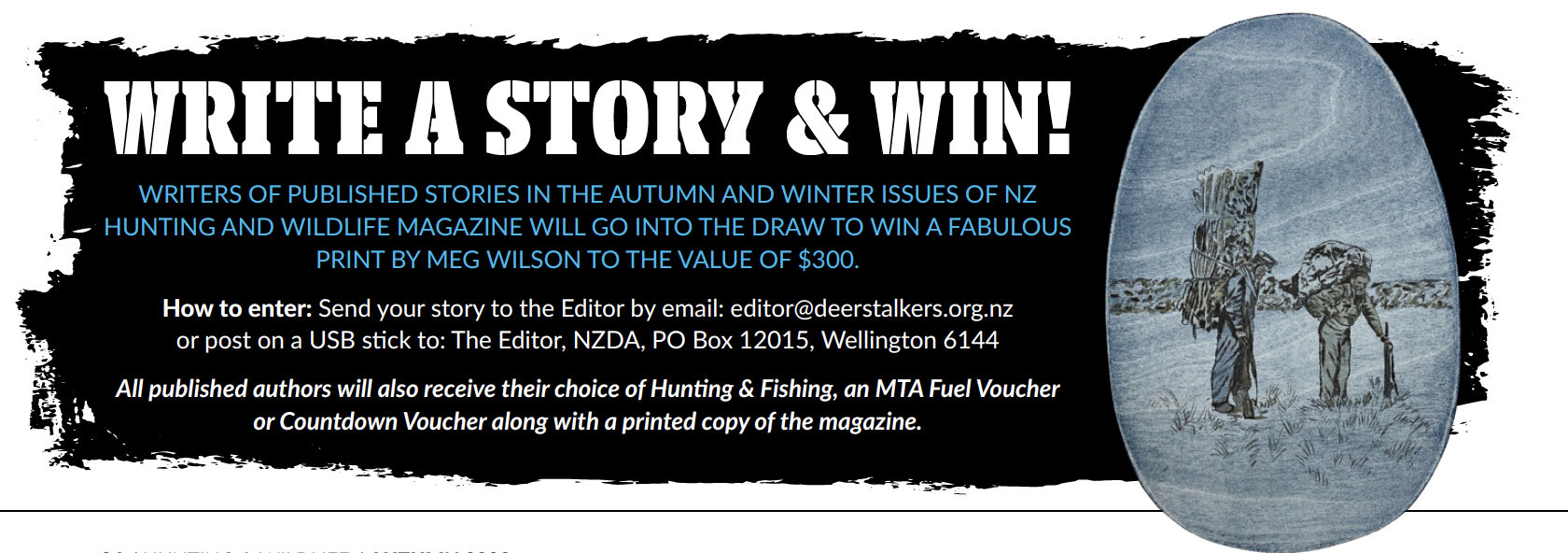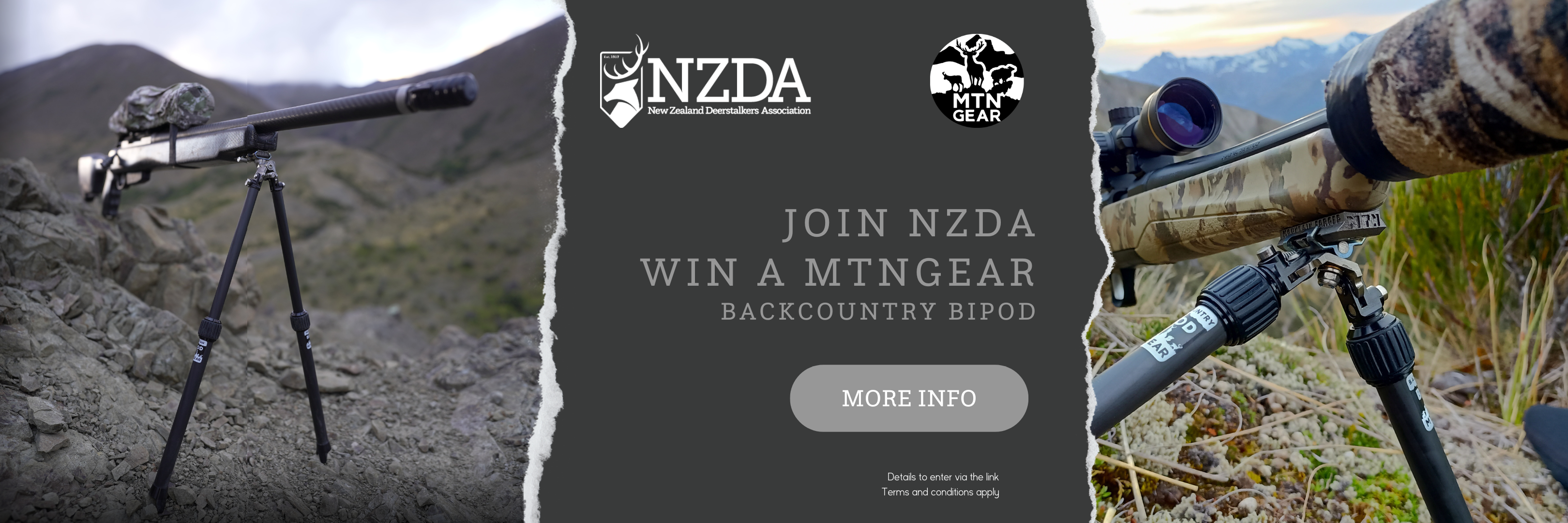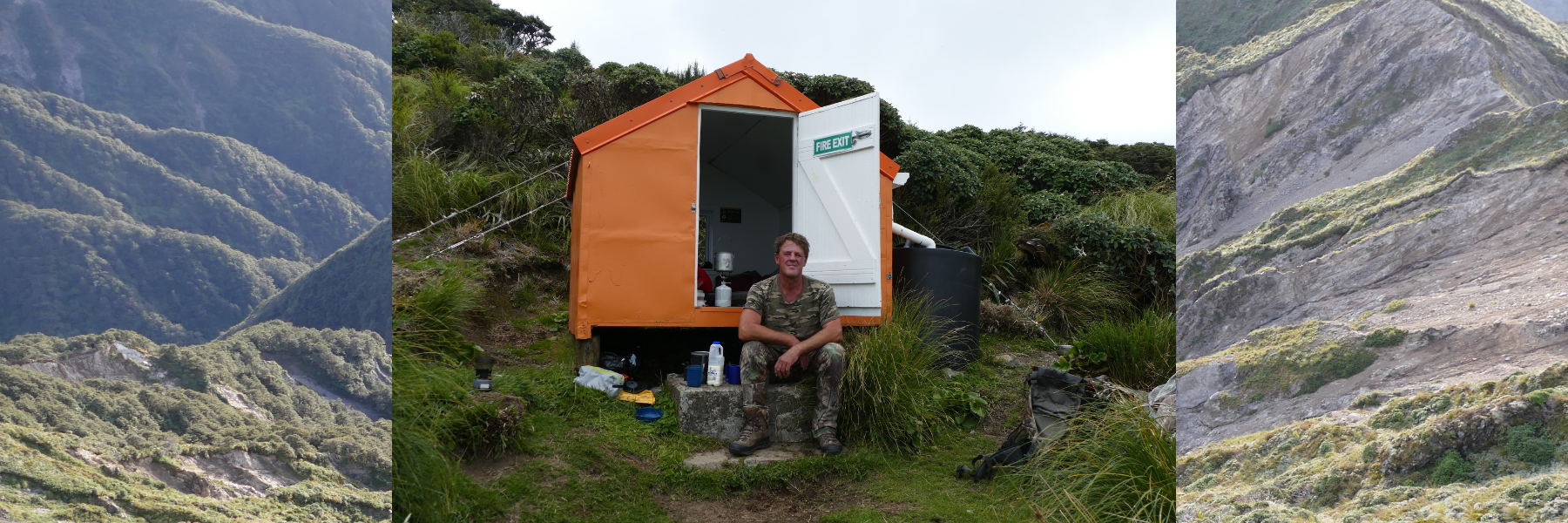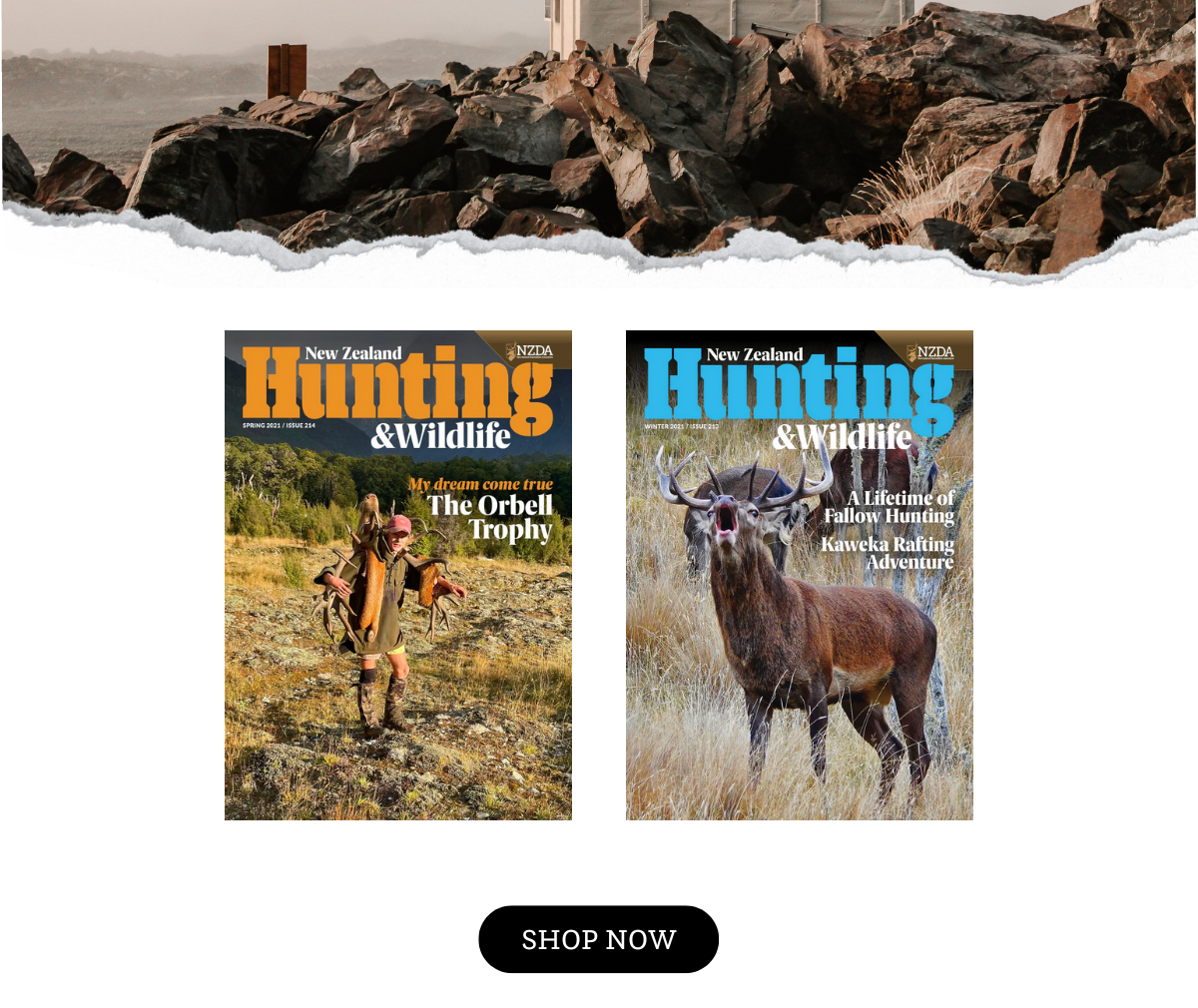Ruahine Deer Control
18 January
Hunting and Wildlife Magazine - Issue 217 Winter
Words By: Simon Gibson
DOC has identified a number of areas in the Ruahine Forest Park where animal numbers are considered to be too high. With this in mind, a Hutt Valley Branch fly-in trip was organised to target high priority areas. Twelve spaces were available, and a deposit (commitment fee) had to be paid before you went on the list. The Club committee agreed to subsidise some of the helicopter costs to make it more attractive to members. The condition of this subsidisation was that participants were to shoot all deer possible.
The club committee had requested a one-off permit from DOC for parties to be landed away from huts, greatly increasing the chances of animals being taken. While the Ruahine Conservation Management Plan allows for this under the auspices of animal control, DOC declined on the grounds that they were consulting iwi on unspecified matters. This meant that only hut sites could be used as drop-off points, which would cut into the available hunting time after getting away into good country.
All the logistics for transport and who was going to which hut were easily sorted over a couple of Zoom calls and we were all go. A total of twelve hunters were to be flown into four huts. The weather forecast for the five-day duration of the trip couldn’t have been any better with light winds and fine weather and this proved to be the case. Two parties would fly from Kashmir Road on the eastern side of the range while the other two parties would access off the back of a farm on the western side to cut down flying time.
The Ruahine Range runs from the Manawatu Gorge right up to the Ngaruroro River. There is a very good hut network throughout the park. There are good numbers of red deer present at the moment and a sprinkling of Sika closer to the Ngaruroro River and Kaweka Forest Park boundary. Access to many tracks on the Western side are currently being blocked by landowners so you need to do your research first. The Ruahine is infamous for the belt of leatherwood scrub between the big bush and the tussock.
I first visited this NZFS bivvy 20 years ago when it was quite run down. Recently it received a new lease of life thanks to a BCT funded work party.
This is impossible to get through in many places. Creeks with slips in their heads often give access to the tops and are also an absolute hot spot for deer.
After meeting at the carpark, introductions were made, and a last-minute sorting of gear was undertaken. The Rangitikei Helicopters 500 was due at 2pm so we had a bit of time to kill.
I was partnered with Craig Cottrill for the next five days, based at a bivvy on the bush edge that I’d last visited 20 years ago. To this day I remember the slog in which was remembered as the chopper took some time to climb up to it from the carpark. As is always the case in these situations, it’s a surreal feeling to be sitting in the carpark then 10 minutes later you are on top of a mountain range in prime hunting country.
Carrying our gear down to the old NZFS bivvy took only minutes and what a sight to behold it was. The run-down old bivvy I remembered had been given a major makeover the year before by a team funded by the Back Country Trust. The Ruahine boasts a number of these dog-box style bivvies, built by the NZFS to support the deer culling efforts of the era.
With gear stowed and the afternoon well advanced, it was time to start heading along the range for an evening hunt. Magnificent looking creek heads dropped away on each side of the range with shingle screes that were well tracked. Where the big bush gave way to leatherwood and then tussock was where we concentrated our efforts. A few deer were spotted on the main range, but they were too far away.
As evening closed in, I was methodically glassing the guts in the head of a big creek, but this produced no sightings, so I dropped lower down the face to better see into the creek-head. I quickly spotted a hind, two yearlings and a six-point stag.
Craig glassing the main range as mist creeps into the valley. Most of the deer seen on these faces were above the bush edge, in some cases way out in the open.
There was no way I could shoot from where I was, so I spent 20 minutes slithering down the slope through tussock and then into a very steep rocky chute to close the range. As I poked my head over the top of a little knob that I hoped to shoot from, I quickly spotted the stag, then the other deer as they fed. The range was 160 yards. After setting my .300WSM up on its bipod, I laid out my spare ammo and was ready to go. The stag went down first, then the hind, the two yearlings didn’t know what to do and were soon both down too. To get over to them meant a big drop down through some rough country and then a steep climb back up to them. The sun had already set so they would have to wait until the morning. I joined up with Craig on the ridge above after a hard climb and we headed for camp.
The next morning, we were well on our way before first light and were treated to a glorious sunrise over Hawkes Bay. It really is a spectacular sight watching the run rise up over the curve of the horizon and bathe the area in a beautiful light.
We were stopping at each basin and glassing for ten minutes, then moving to the next as the deer would soon start to head for the bush as the sun got higher. As we stood to leave after glassing a basin Craig spotted a hind 200 metres below us. It’s amazing how you can intently glass an area and see nothing, then suddenly a deer is in full view after walking out of a gut. She was quickly joined by another three deer. Craig wasted no time getting a rest and took the first hind with a clean shot. As the remaining deer bolted, they made the fatal mistake of pausing to look back as they were about to disappear. A second fell to Craig’s rifle. Craig’s Vizsla Pippa, make short work of finding them in the tussock. We then spent an hour recovering as much meat as we could and left it on top of the main ridge for collection on our return.
It’s mainly backcountry users who get to see these types of magnificent sunrises.
Some fabulous country was glassed over the course of the morning and while a few deer were spotted in the distance it was clear most of the deer out in the open headed into cover by about 8am.
Craig returned in the evening and quickly spotted a bedded stag which he took with a clean shot. A previously unseen hind and yearling were making their escape, but both went down due to Craig’s excellent shooting skills.
We got back to the bivvy in the dark and had a visitor. Josh and his dog had come in for the night. From the carpark to the bivvy had taken him an astonishing 1 ¾hrs when normally this would be anywhere from 4-5hrs. He was a mountain runner and was travelling very light and literally ran to the bivvy. It wasn’t long before Craig and Josh were in deep discussion over different calibres and ballistics.
The following morning, we invited Josh to join us on our morning stalk. A spiker was spotted on a face and as Craig stalked in on it Josh and I lay back in the tussock yarning about hunting. A distant shot signalled another deer down. Josh then left us at midday and ended up taking a deer in the riverbed just before the carpark.
Great Ruahine hunting country.
In total 23 deer were taken by the four parties which was a pleasing result given all hunting started from hut sites. The next trip is already being planned for late November or early December when the spring growth will have the deer out on the tops and slips. Hopefully by then DOC will be able to issue a one-off permit to land at specific high animal density sites which will have a much bigger impact on animal numbers.
Craig and his dog Pippa with one of two deer taken early morning.
Write for Hunting and Wildlife

Join NZDA To Help Us Advocate on Your Behalf



